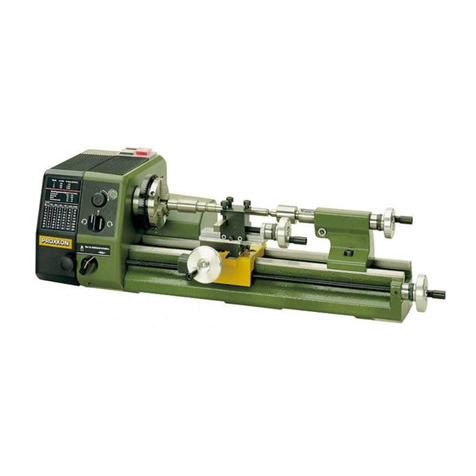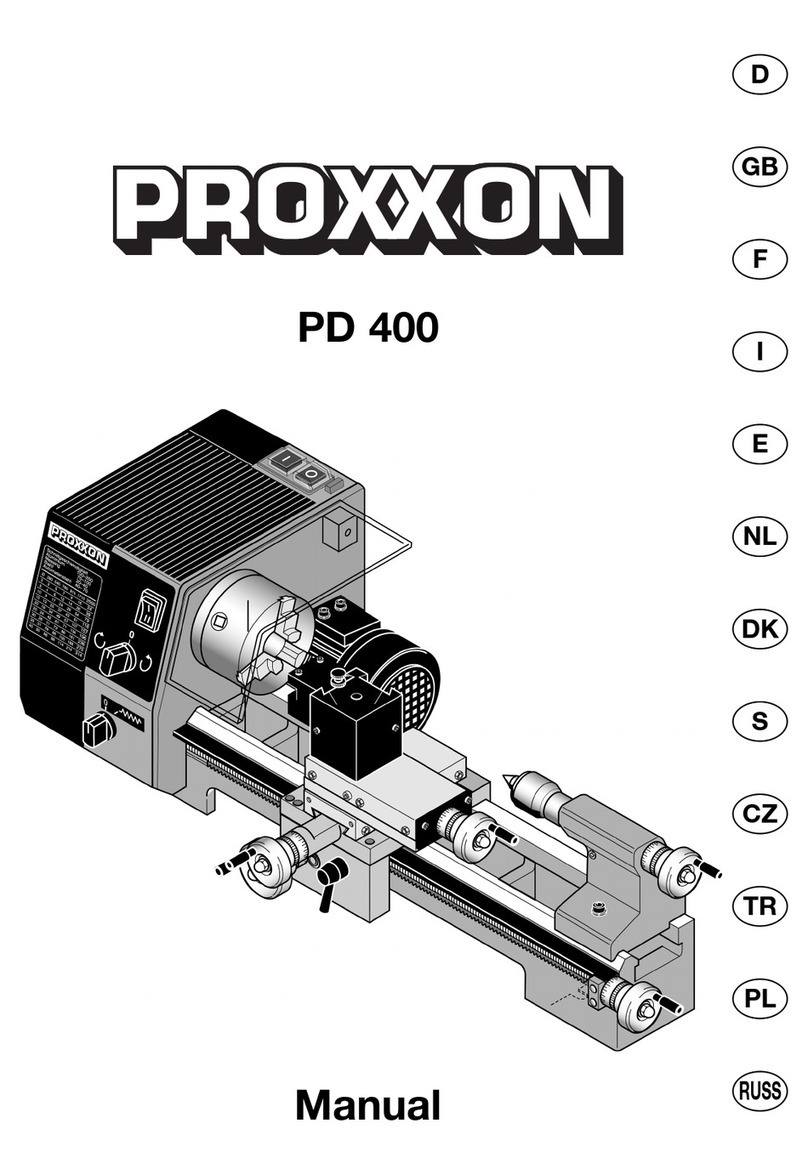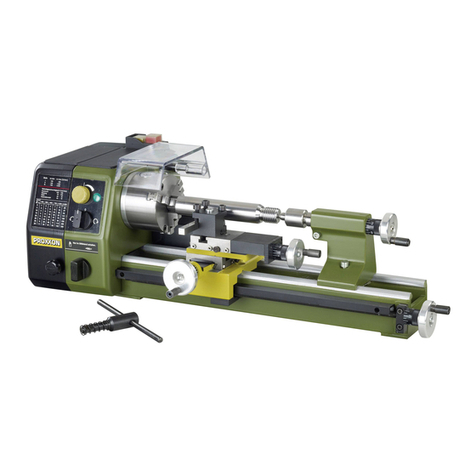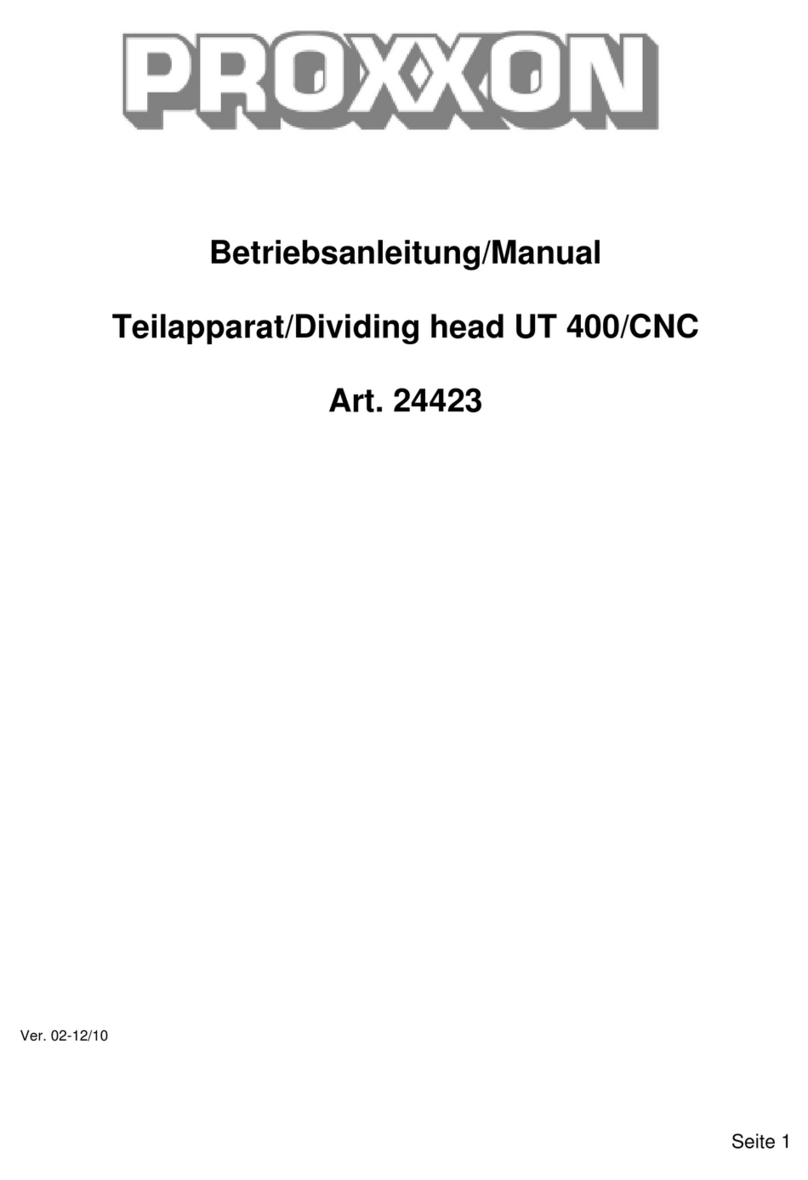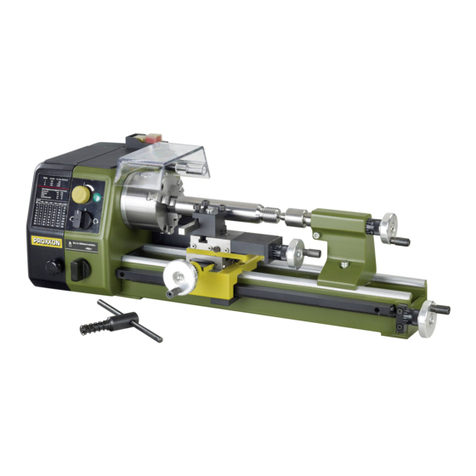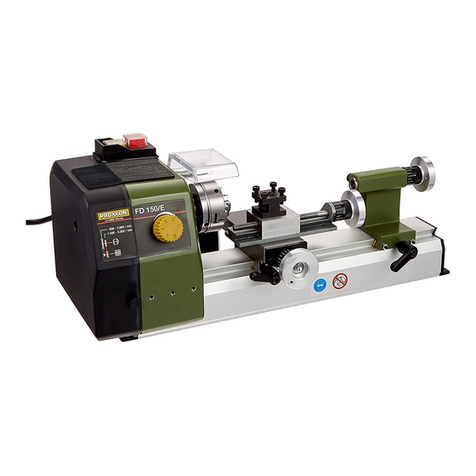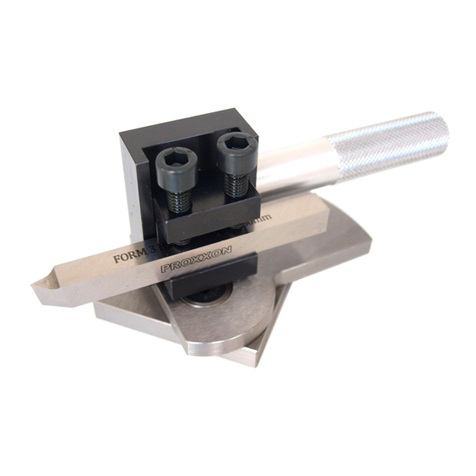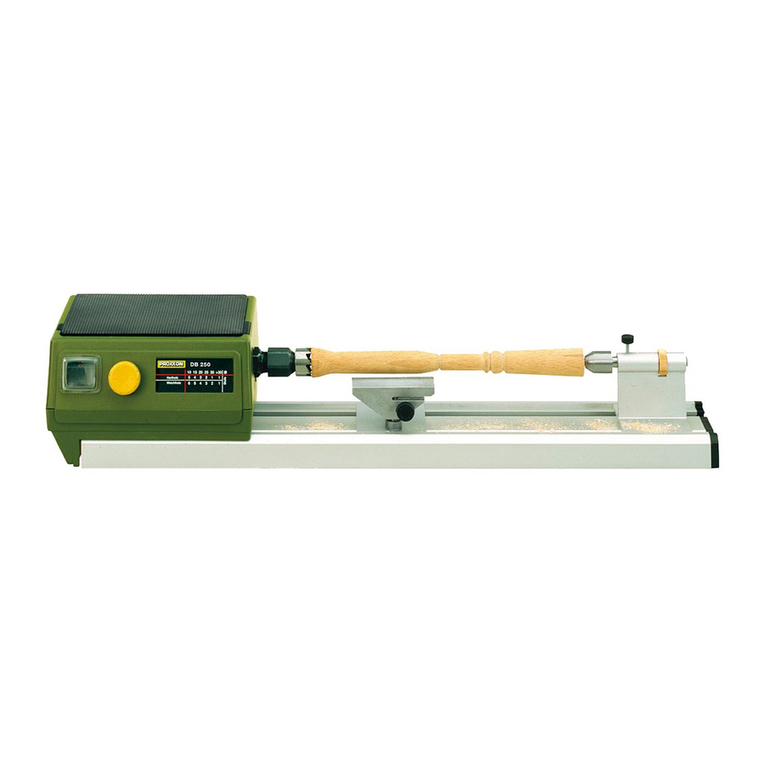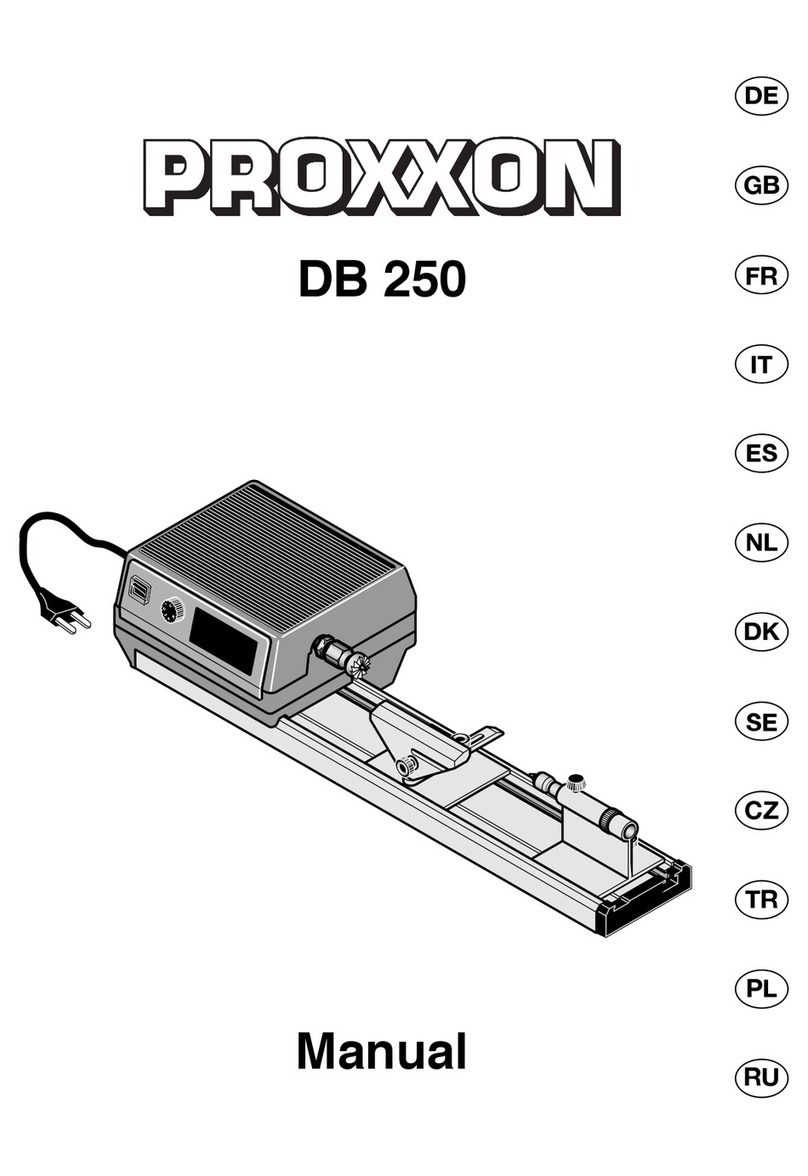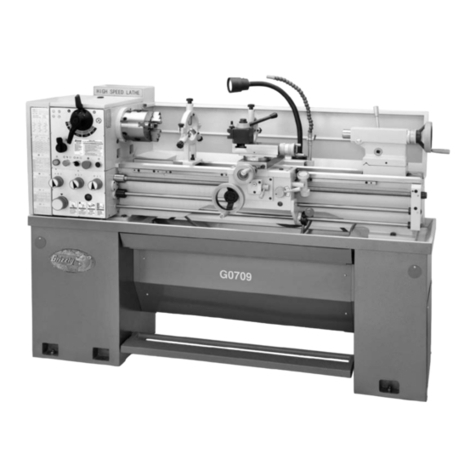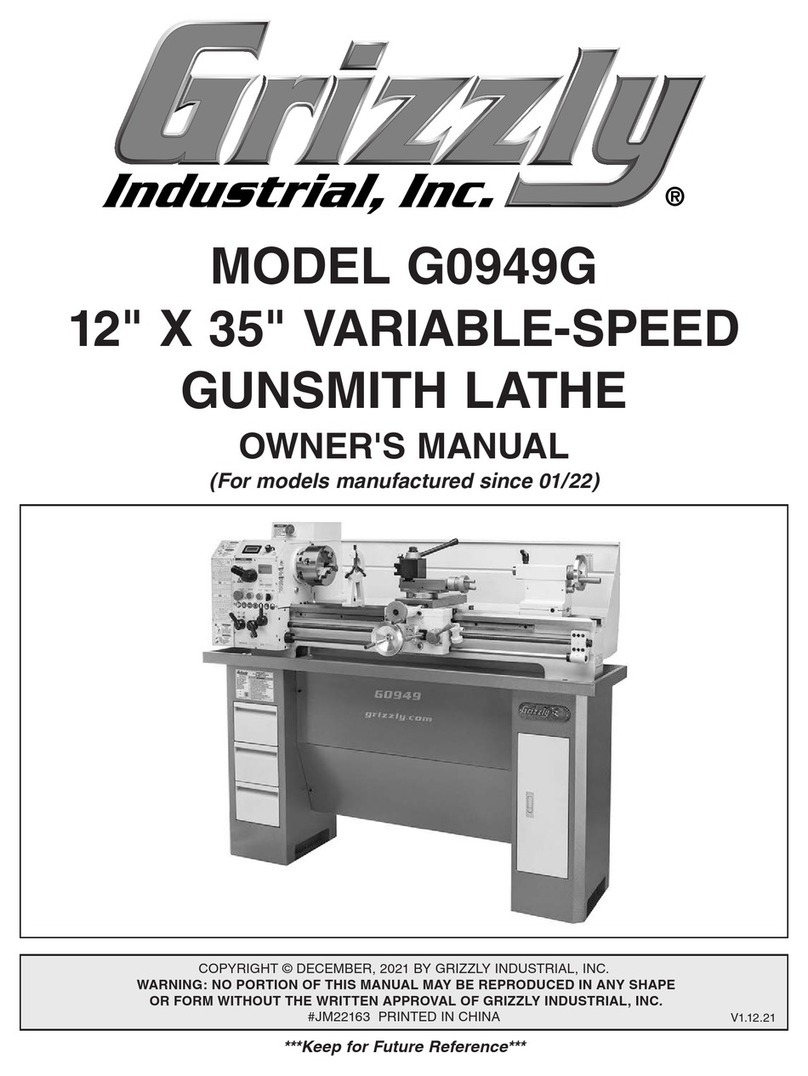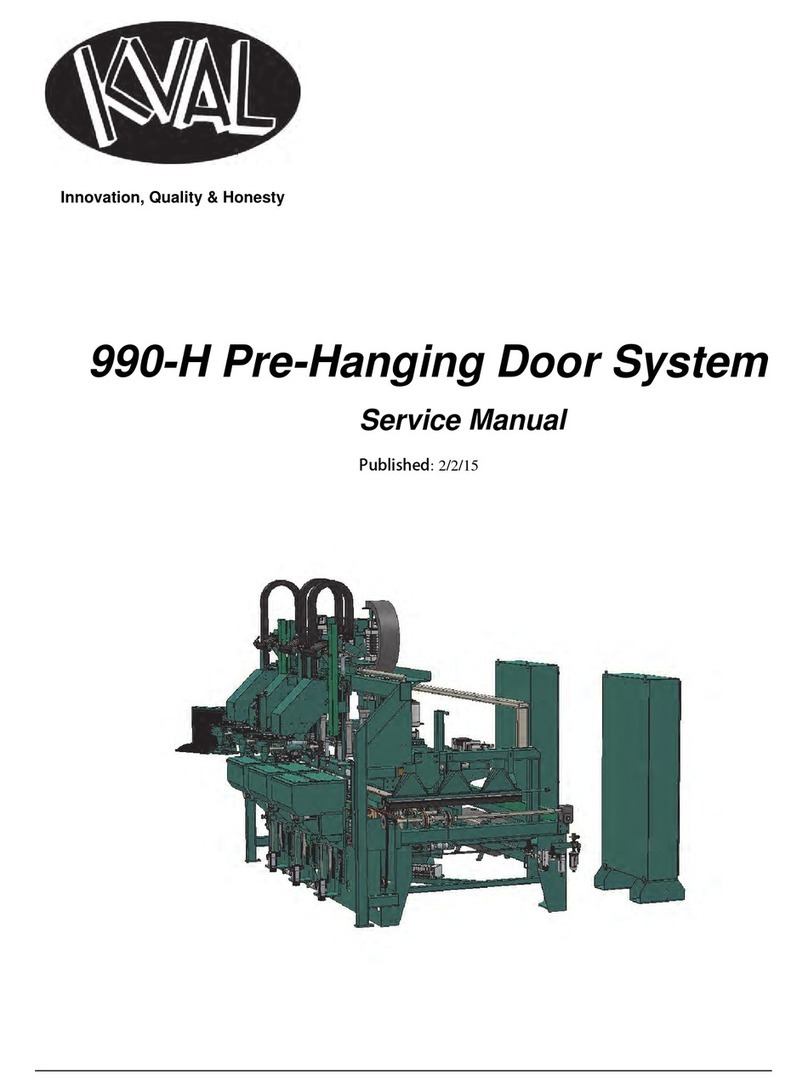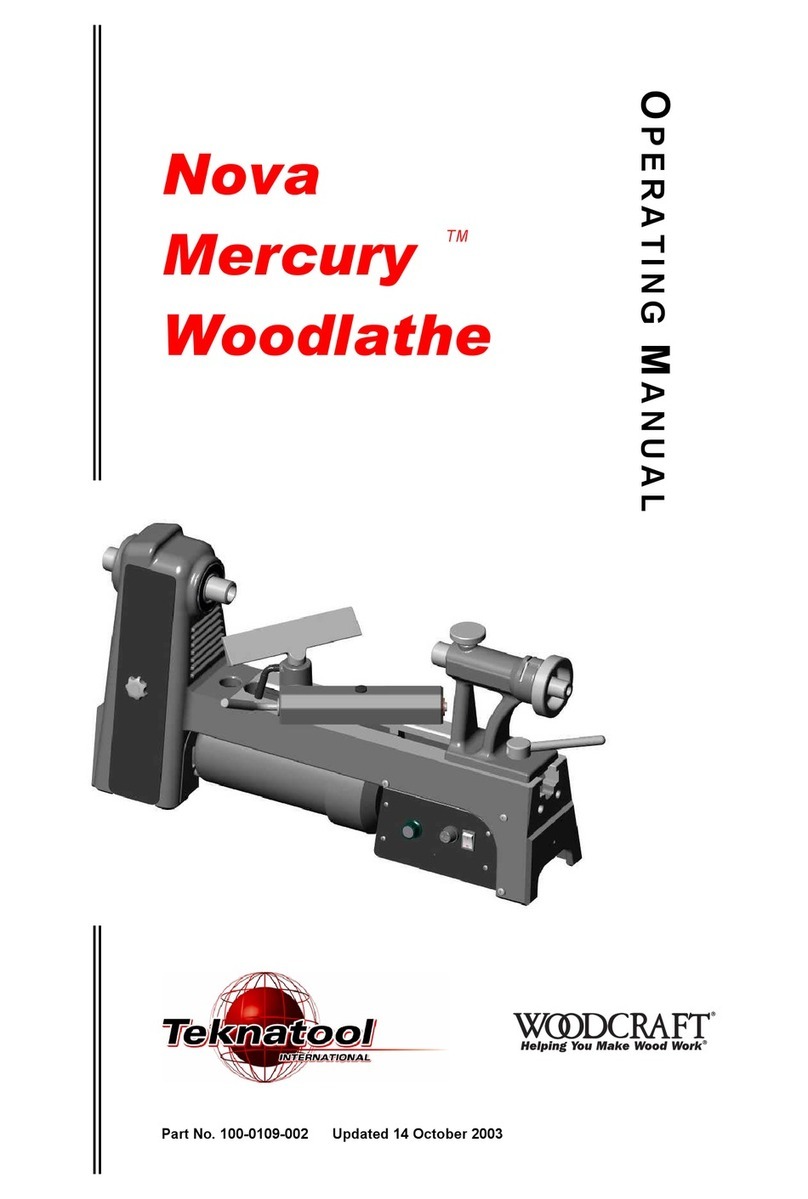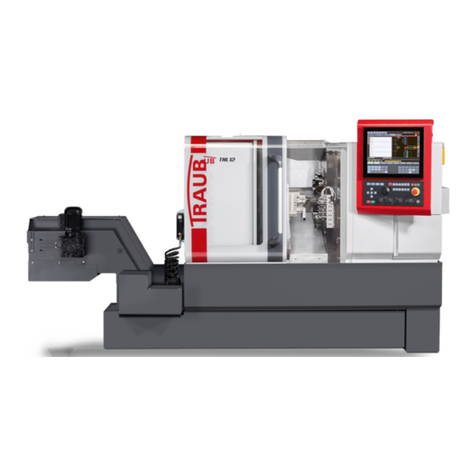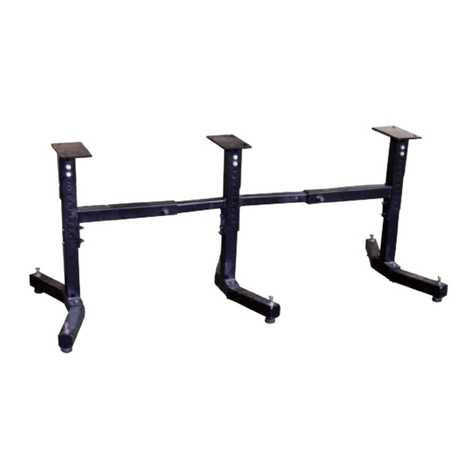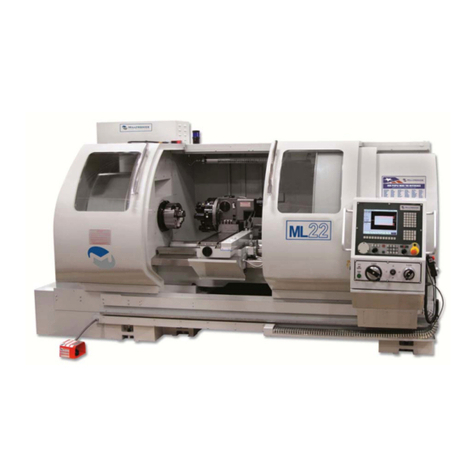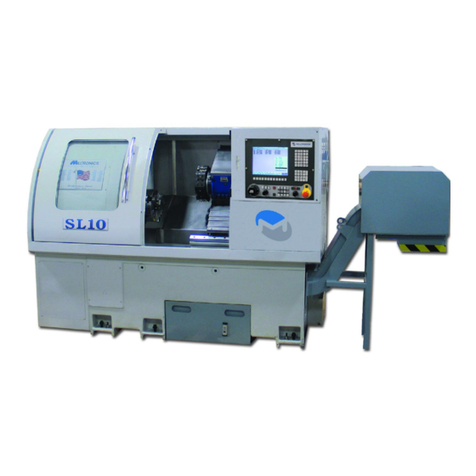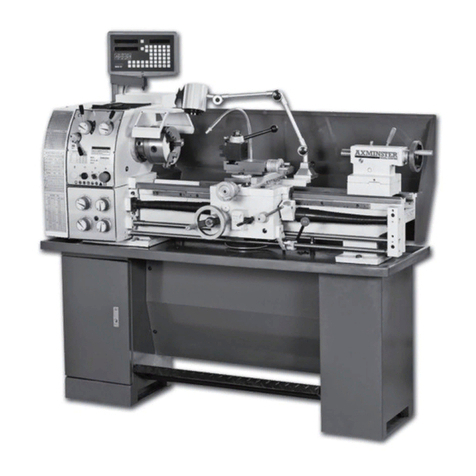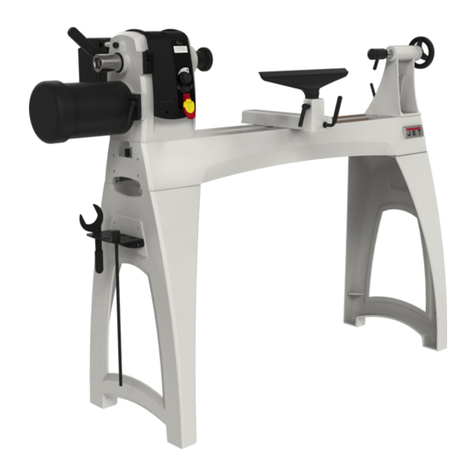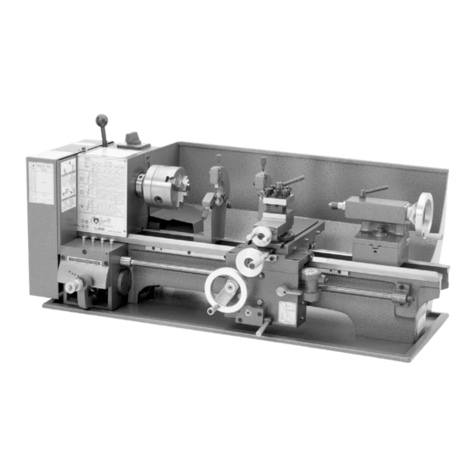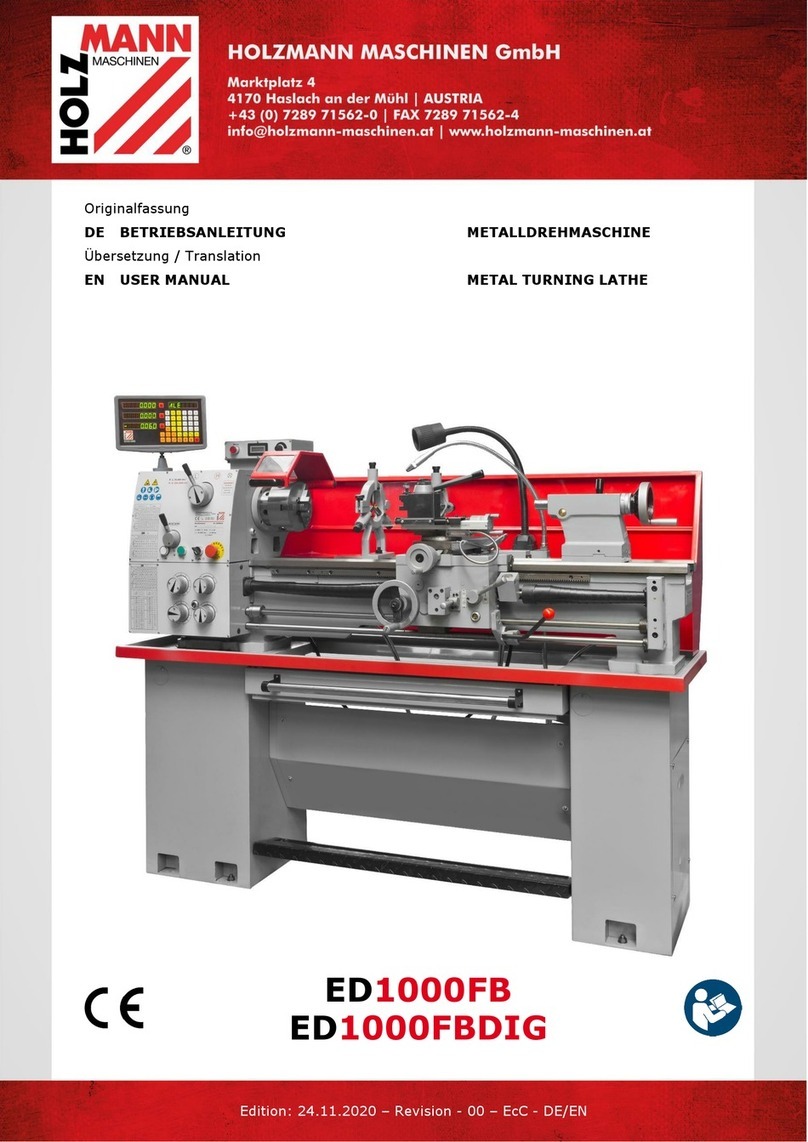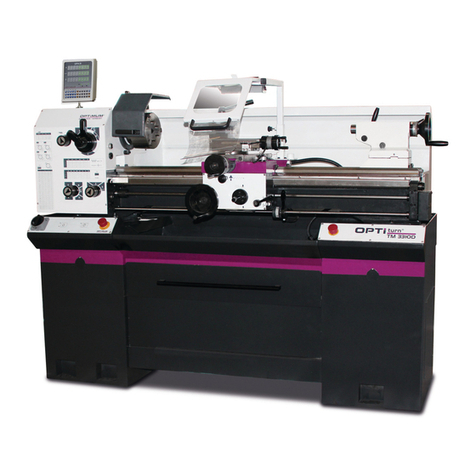
-6-
General safety instructions
Read and become familiar with this entireinstructions manual.
Learnthe tool`s applications, limitations and possible hazards.
1. KEEP GUARDS IN PLACE and in working order.
2. REMOVE ADJUSTING KEYS AND WRENCHES. Form habit of
checking to see that keys and adjusting wrenches areremoved
from tool beforeturning it on.
3. KEEP WORK AREA CLEAN. Cluttered areas and benches invite
accidents.
4. DON'T USE IN DANGEROUS ENVIRONMENT.Don't use power
tools in damp or wet locations, or expose them to rain. Keep
work area well lighted.
5. KEEP CHILDREN AWAY. All visitors should be kept safe
distance from work area.
6. MAKE WORKSHOP KID PROOF with padlocks, master swit-
ches, or by removing starter keys.
7. DON'T FORCE TOOL. It will do the job better and safer at the
rate for which it was designed.
8. USE RIGHT TOOL. Don't force tool or attachment to do ajob
for which it was not designed.
9. USE PROPER EXTENSION CORD. Make sureyour extension
cordisingood condition. When using an extension cord, be
suretouse one heavy enough to carry the current your product
will draw.Anundersized cordwill cause adropinline voltage
resulting in loss of power and overheating. Ta ble 1shows the
correct size to use depending on cordlength and nameplate
ampererating. If in doubt, use the next heavier gage. The
smaller the gage number,the heavier the cord.
Exception No. 1: The reference to the table and the table itself
may be omitted if astatement indicating the appropriate gage
and length is incorporated into the instruction.
Exception No. 2: The information regarding extension cords
need not be provided for apermanently connected tool.
10. WEAR PROPER APPAREL. Do not wear loose clothing, gloves,
neckties, rings, bracelets, or other jewelry which may get
caught in moving parts. Non-slip footwear is recommended.
Wear protective hair covering to contain long hair.
Exception: The reference to gloves may be omitted from the
instructions for agrinder.
11. ALWAYS USE SAFETY GLASSES. Also use face or dust mask
if cutting operation is dusty.Everyday eyeglasses only have
impact resistant lenses, they areNOT safety glasses.
12. SECURE WORK. Use clamps or avise to hold work when
practical. It's safer than using your hand and it frees both
hands to operate tool.
13. DON'T OVERREACH. Keep proper footing and balance at all
times.
14. MAINTAIN TOOLS WITH CARE. Keep tools sharp and clean for
best and safest performance. Follow instructions for lubricating
and changing accessories.
15. DISCONNECT TOOLS beforeservicing; when changing acces-
sories, such as blades, bits, cutters, and the like.
16. REDUCE THE RISK OF UNINTENTIONAL STARTING. Make
sureswitch is in offposition beforeplugging in.
17. USE RECOMMENDED ACCESSORIES. Consult the owner's
manual for recommended accessories. The use of improper
accessories may cause risk of injury to persons.
18. NEVER STAND ON TOOL. Serious injury could occur if the tool
is tipped or if the cutting tool is unintentionally contacted.
19. CHECK DAMAGED PARTS. Beforefurther use of the tool,
aguardorother part that is damaged should be carefully
checked to determine that it will operate properly and perform
its intended function check for alignment of moving parts, bin-
ding of moving parts, breakage of parts, mounting, and any
other conditions that may affect its operation. Aguardorother
part that is damaged should be properly repaired or replaced.
20. DIRECTION OF FEED. Feed work into ablade or cutter against
the direction of rotation of the blade or cutter only.
21. NEVER LEAVE TOOL RUNNING UNATTENDED. TURN POWER
OFF.Don't leave tool until it comes to acomplete stop.
Warning
Additional safety instructions for lathes:
For Your Own Safety Read Instruction Manual BeforeOperating Lathe
a) Wear eye protection.
b) Do not wear gloves, necktie, or loose clothing.
c) Tighten all locks beforeoperating.
d) Rotate workpiece by hand beforeapplying power.
e) Rough out workpiece beforeinstalling on faceplate.
f) Do not mount split workpiece or one containing knot.
g) Use lowest speed when starting new.
GROUNDING INSTRUCTIONS:
1. All grounded, cord-connected tools:
In the event of amalfunction or breakdown, grounding provides a
path of least resistance for electric current to reduce the risk of
electric shock. This tool is equipped with an electric cordhaving
an equipment-grounding conductor and agrounding plug.
The plug must be plugged into amatching outlet that is properly
installed and grounded in accordance with all local codes and
ordinances. Do not modify the plug provided -- if it will not fit the
outlet, have the proper outlet installed by aqualified electrician.
Improper connection of the equipment-grounding conductor can
result in arisk of electric shock. The conductor with insulation
having an outer surface that is green with or without yellow stripes
is the equipment-grounding conductor.Ifrepair or replacement of
the electric cordorplug is necessary,donot connect the equip-
ment-grounding conductor to alive terminal. Check with aquali-
fied electrician or service personnel if the grounding instructions
arenot completely understood, or if in doubt as to whether the
tool is properly grounded.
Use only 3-wireextension cords that have 3prong grounding plugs
and 3pole receptacles that accept the tool's plug.
Repair or replace damaged or worncordimmediately.
2. Grounded, cord-connected tools intended for use on asupply
circuit having anominal rating less than 150 volts:
This tool is intended for use on acircuit that has an outlet that
looks like the one illustrated in Sketch AinFigure30. The tool has
agrounding plug that looks like the plug illustrated in Sketch Ain
Figure30. Atemporary adapter,which looks like the adapter illust-
rated in Sketches Band C, may be used to connect this plug to a
2-pole receptacle as shown in Sketch Bifaproperly grounded
outlet is not available. The temporary adapter should be used only
until aproperly grounded outlet can be installed by aqualified
electrician. The green-colored rigid ear,lug, and the like, extending
from the adapter must be connected to apermanent ground such
as aproperly grounded outlet box.
Grounding methods
GROUNDING
ADAPTER
GROUNDING GROUNDING
MEANS
METAL SCREW
COVER OF GROUNDED
OUTLET BOX
<A> <B>
<C>
<D>
PIN
PIN
Fig. 30
